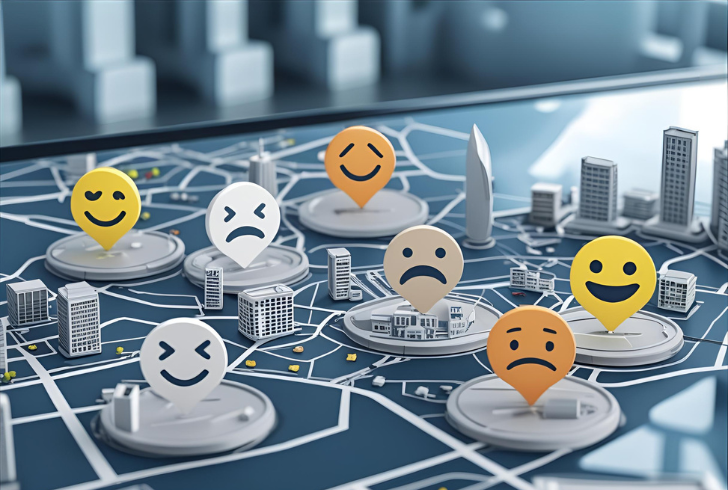AI Can Now Track Your City’s Mood
The way a city feels often speaks louder than how it functions. While traffic flow and infrastructure matter, the emotional experience of urban life plays a major role in how people engage with the spaces around them. Now, researchers at the University of Missouri are using artificial intelligence to capture that emotional experience in real time.
By analyzing Instagram posts and matching them with Google Street View visuals, this team has built something remarkable—a live emotional map of a city.
Turning Feelings Into Digital Data
Jayedi Aman, assistant professor of architectural studies at Mizzou, doesn’t just look at buildings. He focuses on how people respond emotionally to what surrounds them. Partnering with geography and engineering professor Tim Matisziw, Aman developed an AI-driven system that identifies emotional tones based on geotagged Instagram content.

Instagram | @mu.archst | Researchers use AI to read emotions from city photos and match them with how streets really look.
The process begins with location-based social media posts. The AI scans each image and caption for emotional cues—happiness, stress, calm, and more. Then, a second AI model reviews the actual visual environment from that location using Google Street View. By comparing emotional responses with visual features, the team can see which environments trigger specific moods.
This creates a new kind of data: real-time, location-specific emotional insight.
A Breakthrough in Sentiment Mapping
With this method, the researchers generated what they call a “sentiment map.” Instead of waiting for city surveys or public feedback forms, planners can now see how people feel—right now—based on the content they’re already sharing.
Aman explained it this way: “If a park generates a high volume of happy posts, we can dig deeper. Is it the greenery, the walking paths, or the sense of belonging? We can connect those feelings to the actual physical environment.”
This approach doesn’t just offer insight—it builds context that traditional methods often miss. Rather than guessing what works, city planners can now use emotion-driven data to design smarter, more uplifting spaces.
From Data Collection to Smarter Decisions

Image generated by Canva Ai | Emotion maps help cities make better choices by showing how people actually feel in each area.
These emotion maps go far beyond aesthetic upgrades. Local governments could use them to identify unsafe zones, gauge community response after a crisis, or adjust services based on neighborhood mood patterns.
“AI doesn’t replace people,” Matisziw clarified. “It adds a new lens for recognizing emotional trends that shape the city. That leads to decisions grounded in lived experience.” This could mean checking city dashboards not only for traffic or weather, but also for how people feel in different areas at any given time.
Building Cities That Feel as Good as They Work
The researchers aim to create a full digital twin of a city, where emotional data moves in sync with real-world changes. This twin would act as a virtual city that updates in real time and shows emotional shifts right alongside infrastructure and movement data.
Aman stated, “We want emotional data to be a part of every city’s toolkit.” “It gives planners the power to build not just efficient cities, but places where people feel welcome, safe, and connected.”
Emotions shape how people experience urban life. With real-time data and AI-powered tools, city design is moving toward a more human-centered future. This shift opens the door for cities to not only operate better but also feel better for those living in them.